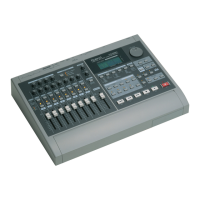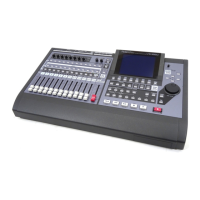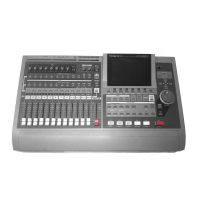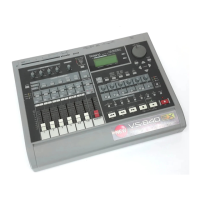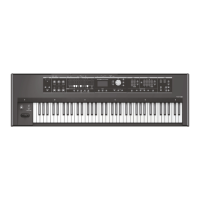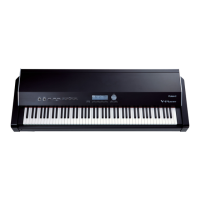Roland VS-2000 Owner’s Manual www.RolandUS.com 211
16—Using Effects
In this chapter, we’ll describe how to use the VS-2000’s effect processing power. We’ll
detail how to:
• set up a loop effect.
• insert an effect on an input or track channel, or the MASTER bus.
• add effects to a headphone mix.
• select effects.
• edit effects.
•save effects.
For the basics on the VS-2000’s effects and why they’re useful, see Chapters 3 and 5.
Using Loop Effects
When you want to add reverb or a delay to your input, track or FX
return signals, use a loop effect. Loop effects add effect processing
to a signal—they don’t replace it—so that you end up with a
combination of the original dry signal and the effect.
The following sections explain how to set up an internal and
external loop effect. Whether you’re recording a loop effect on
tracks or adding them during a mix, the process is the same—the
only difference is where you send the effect’s output signal when
you’re done, as described in Chapter 17, “Working with FX Return
Channels.”
Setting Up an Internal Loop Effect
Play Now, Learn Later
If you’ve just created a new project and would like to quickly start experimenting with
loop effects—and learn about their mechanics later on—you can. When you create a
new project that doesn’t copy the settings of the currently loaded project (Page 102), the
VS-2000 routes FX Busses 1-6 to FX 1-6, respectively. Therefore:
1. Display the desired channel’s CH EDIT screen.
2. Use one of the channel’s FX send controls (Page 150) to send some of the channel’s
signal to the same-numbered effect. Use the FX 1 send controls to send the signal to
FX 1, for example. Try a send level of 0.0 dB as a start.
3. Press and hold down the FX 1 button to display the CH EDIT parameters for FX
Return Channel 1.
4. Adjust the effect’s level in the MASTER mix by setting the FX return’s FADER value
(Page 230).
5. Select the desired effect—see “Selecting Effect Patches” on Page 219.
6. Repeat Steps 1 and 2 for any other input or track channels you want to send into the
effect.
To learn how to display the CH EDIT screen for an input or FX channel, see Page 147.
Effect
Dry signal Wet signal
Dry signal
Copy of dry signal
VS2000OMUS.book 211 ページ 2004年10月20日 水曜日 午後3時3分

